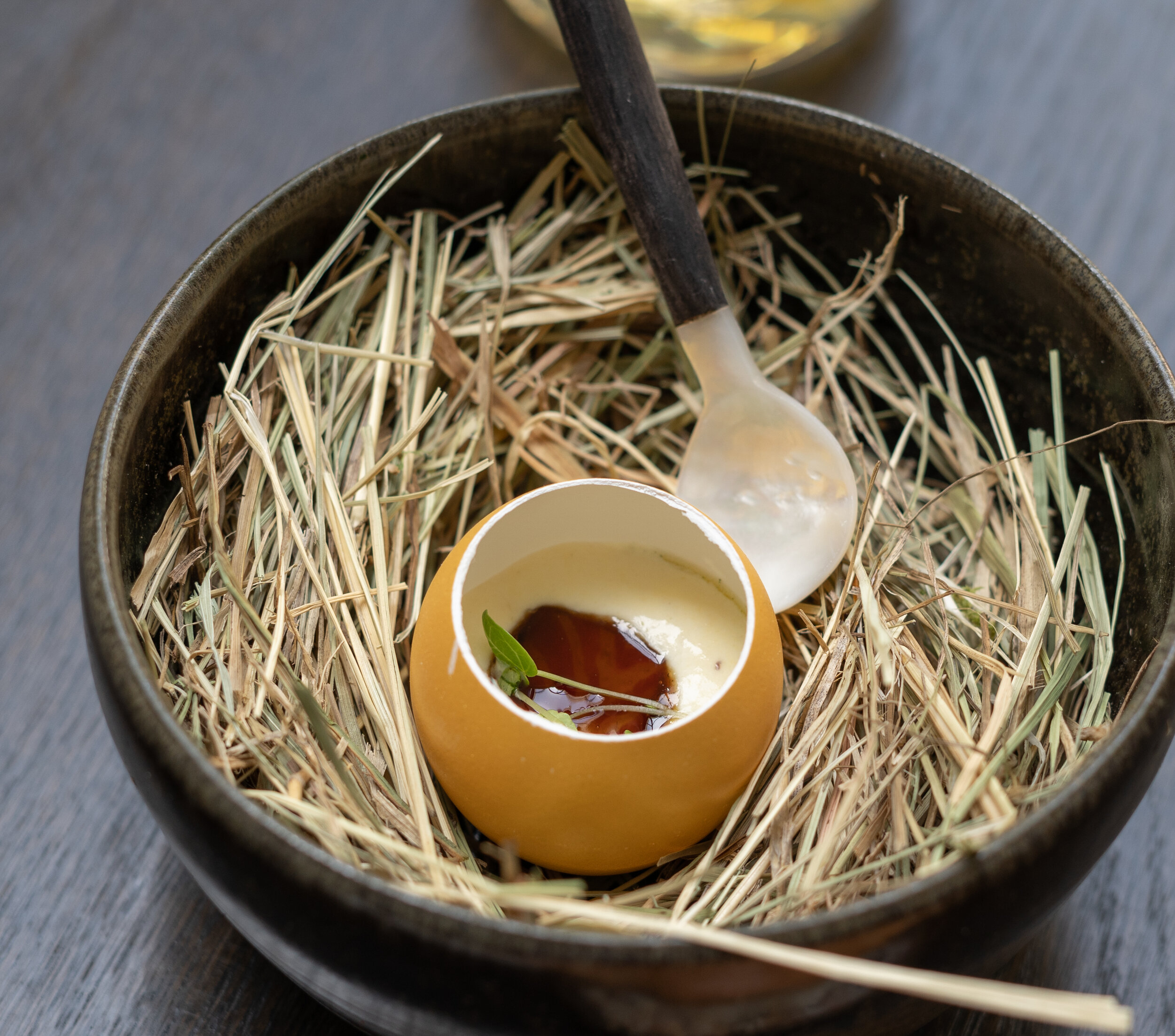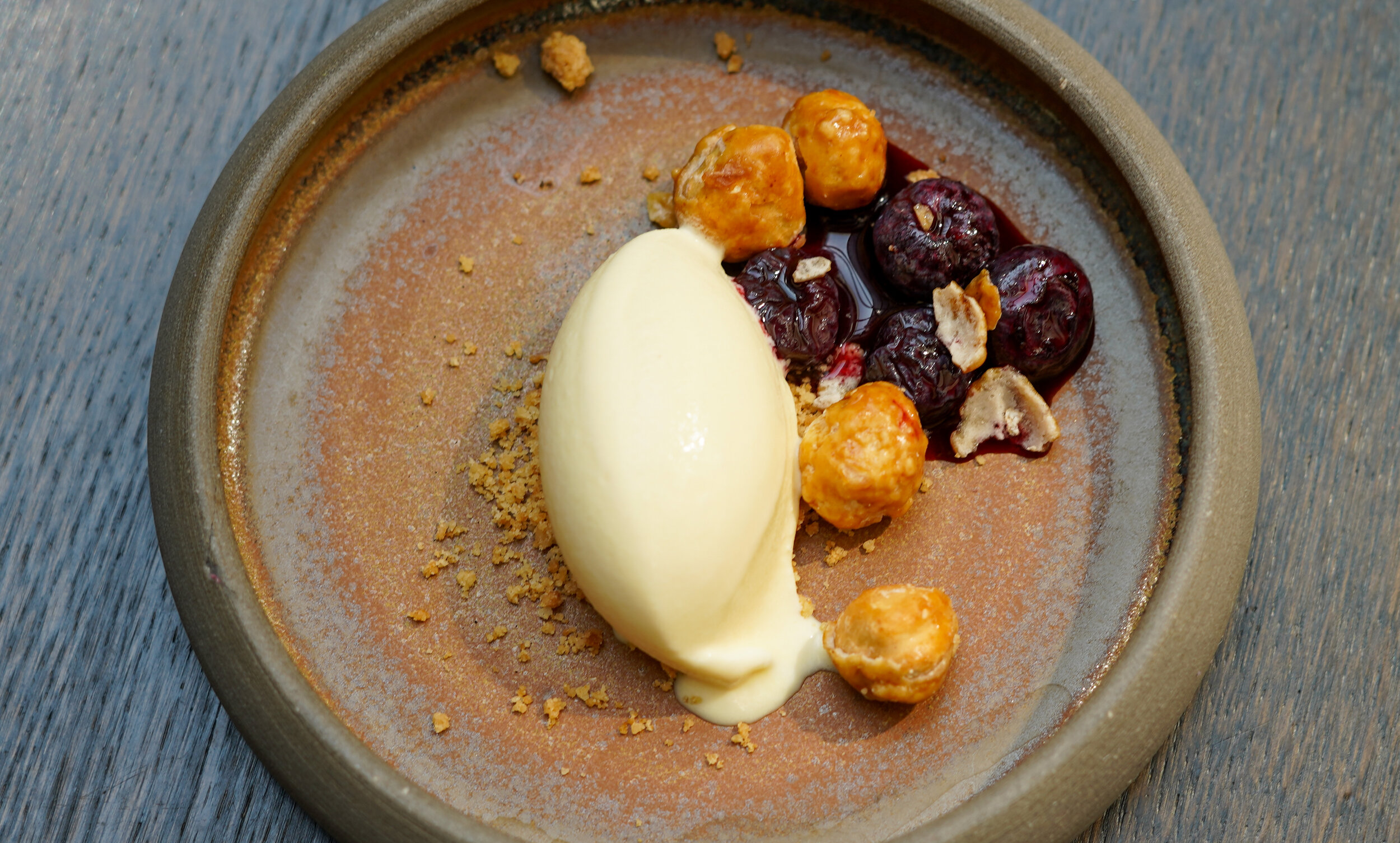De Librije
De Librije review at-a-glance
+Michelin always says part of its scoring is based on how well the Chef is able to impart their personal style to their food. Clearly, De Librije scored high on this part of the Michelin guide’s assessment - every inch of the food and restaurant were imbued with Chef Boer’s personality.
+Impressive dining room that fits with the overall ethos of the restaurant and provided a striking place to spend a few hours.
-Cooking was all technically correct but lacked any real standout dishes.
Awards: Three Michelin stars, #46 Worlds 50 Best (2019)
Review Rating: 93/100
Verdict: I struggled with my meal at the De Librije quite a bit. I wanted to love it. The dining room is gorgeous and relaxed with no unnecessary rigid formality. Chef Boer’s cooking is deeply grounded in his region with seafood from the North Sea and duck fetched only a few kilometers from the restaurant. The food even has a good sense of playfulness, with lots of little flourishes from the chef (tartar on a ring?).
Somehow, despite all of this, the meal did not fully click with me. The chef should be commended for his focus on local ingredients (it is certainly easier to just have the best from France flown in) and creating an overall delightful experience. However, when I look back at the meal, the food often lacked the wow factor I was looking for which resulted in a meal that was worthy of the three stars but did not quite touch the highs of my favorite meals.
Visited: June 2019
Price I Paid: €210 for 7-course lunch
Value: 14/20
De Librije background
Since 2019, when De Leest closed, De Librije is one of only two 3-Michelin star restaurants in the Netherlands. Like its fellow three-star restaurant Interscaldes (which is located in rural Zeeland), De Librijie is located outside a major city in the sleepy city of Zwolle (around 1 hr northeast of Amsterdam). The restaurant is run by a husband and wife team, Jonnie and Thérèse Boer. While Thérèse takes care of the front of the house, Jonnie runs the kitchen. Chef Boer’s cooking style is hard to pin down but the theme running through the entire tasting menu is a healthy obsession with the products of his native Netherlands.
For the longest time, the restaurant was housed in an old library before moving the restaurant to the Librije hotel in 2015. While I did not stay overnight, the hotel was formerly a jail and oozes a lot of quirky, fun charm that also shows up in Chef Boer’s cooking. While I did not visit the previous restaurant, I can hardly imagine the dining room was as nice as the new one which featured glass ceilings and plenty of large plants which gave the impression of eating outdoors while inside.
Rather than sticking to a surprise tasting menu or a prix fixe menu, De Librije mixed and matched both concepts. The menu included four “colors”, each with 3-4 dishes to choose from. Rather than list the full description of the dish, the menu kept the details focused on the main ingredients so you could choose what best suits your taste while still being somewhat surprised by the dish. In addition to the four courses where you picked the dish, the diner can elect to extend the menu to as many as seven dishes by adding additional surprise courses. I really enjoyed this format - so many Michelin restaurants focus on a singular tasting menu with no accounting for a diners whims and preferences. While this may let a chef execute their vision of a tasting menu I enjoyed having a bit of choice for once. De Librije managed to provide this choice while also keeping the excitement of a “blind” tasting menu.
What I ate at De Librije
The chef’s playfulness started early with an amuse bouche served on a ring that had the perfect little dome of veal tartar and caviar. Raw red meat and caviar is a classic pairing but this was as good as it gets - smartly served in a small bite so you are left wanting more instead of tired of the flavors by the time you finish.
The amuses kept coming after the ring, a nice selection of bites that highlighted various local ingredients. From top left to bottom right, crispy pork from local pig, dutch brown shrimp two ways, head of pike, crayfish and pike broth, and last shoulder of swimming crab. An elevated start to the meal that whets the appetite and also provided a good introduction to Chef Boer’s style of cooking and the flavors of the region.
For my first course, I selected one of the signature dishes of the restaurant - brown crab with chicken liver and veal heart. The crab, from the North Sea, was fresh and served under a shiso leaf which added a bright taste. Also on the plate was the aforementioned chicken liver which provided a deeply rich contrast to the lighter crab.
The next dish was lighter than the liver, showing off some langoustines that had been marinated in kombucha and topped with various herbs and a bit of red onion. A lot of effort went into the dish, the kombucha made in-house by mixing sugar, butter, ginger, and yeast and letting it sit for an extended period of time. The kombucha included plenty of acid which made it a perfect marinade for the langoustine, creating a dish reminiscent of ceviche. While it was an interesting approach I found the red onion slightly too sharp and the natural sweetness of the langoustine hard to detect underneath the flavor of the kombucha.
Monkfish was next served with curry of Indian cress and extract of pandan leaves. The monkfish was cooked well, adding a nice meaty texture and the curry was not too strong. A solid dish but not one that jumped off the plate.
We stayed with fish again - a nice piece of red mullet that was topped with brown shrimps, crispy shrimp head and Woodruff. The plating on this dish must have involved quite a bit of tweezer work as the various seafood were artfully arranged on top of the mullet. The overall effect was a triumph, the mullet having none of its sometimes fishy flavor and the shrimp head providing more than looks with its nice crunchy texture.
The main course was an elaborate dish of duck with hay and celery. The duck was as local as can be, raised about 20 km from the restaurant in Ermelo, Netherlands. The amount of preparation that went into this dish was impressive - first, the duck was stuffed with hay and dry-aged for ~5 days to help dry the skin and impart a bit of the hay flavor into the meat. Once aged, the duck (which takes on an interesting yellow color from the aging) is then oven roasted in hay and given a quick torching to crisp up the skin. The kitchen then uses some interesting knife work to cut the breast into a T-bone shape and plate it. The duck was paired with two dueling sauces - a jus made of the bones and hay and a refreshing stock of celery. On the side was an impressively presented mixture of duck leg, tongue, and heart which was tucked into a marinated onion and topped with some raisins, celery, and a creamy foie gras sauce. With all of that effort, the overall effect did not quite wow me. The duck meat was given a thick lacquer of sauce which took away from the crispiness of the skin and the dish had lots of bold flavors that I had trouble piecing together coherently.
Fitting with the innovative style of the restaurant, the kitchen eschewed a traditional cheese board for a surprising dish of foie gras, brioche, and a dutch jersey cow remeker cheese (a variation on gouda). It was a cool idea to use foie gras as part of the transition to dessert but I can’t say everything worked well together. This was a combination of two things I love (foie gras and gouda) but I would have rather had both of the ingredients individually.
Before dessert, the chef’s playfulness continued with a table-side ice cream cart featuring inventive flavors and toppings. Well-made and a fun interlude.
Dessert was named ‘Three times citrus’ and was exactly as the name would suggest - featuring three smaller dishes that showed off different types of citrus. From left to right - grapefruit, orange vanilla caramel, and cucumber with bergamot. As you might be able to tell from the bowl shapes, the course actually came out stacked on top of each other in a short tower that was unstacked tableside, revealing the three mini-desserts. I am not sure if I needed so much citrus in my dessert but the technique was impeccable, each featuring a good balance between acid and sugar. The best of the three was the vanilla, orange, and caramel combination as the trio worked well together with the vanilla flavor coming through strongly.
Mignardises were suitably creative to fit in with the rest of the meal including a walnut crème brûlée that was brûléed in an actual walnut shell. This was definitely better than your more basic mignardises.


















